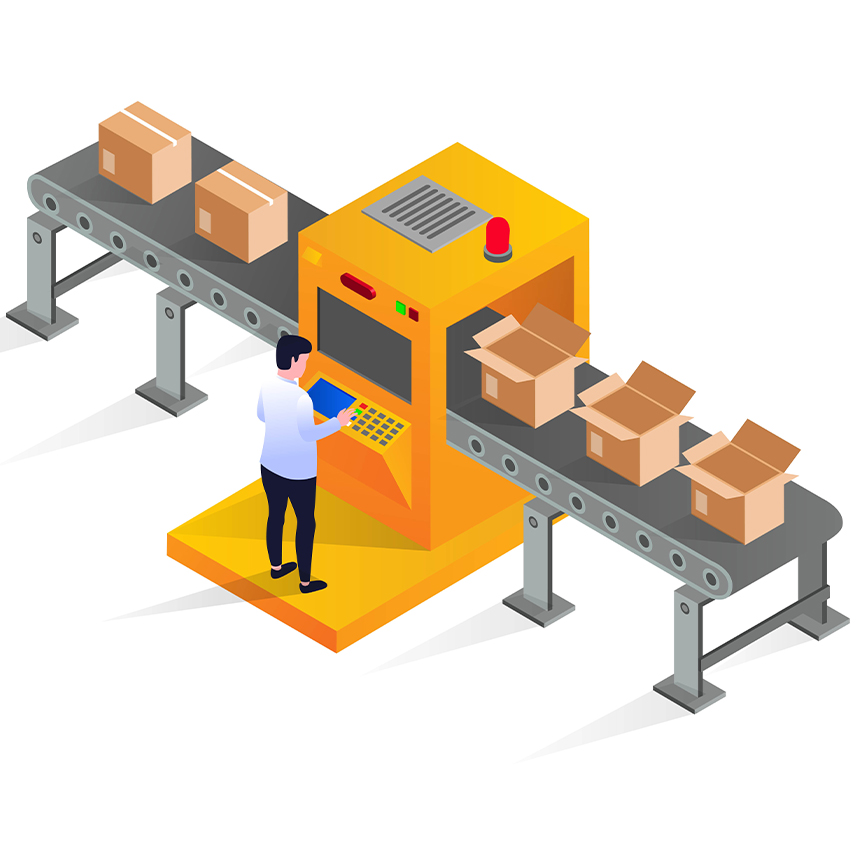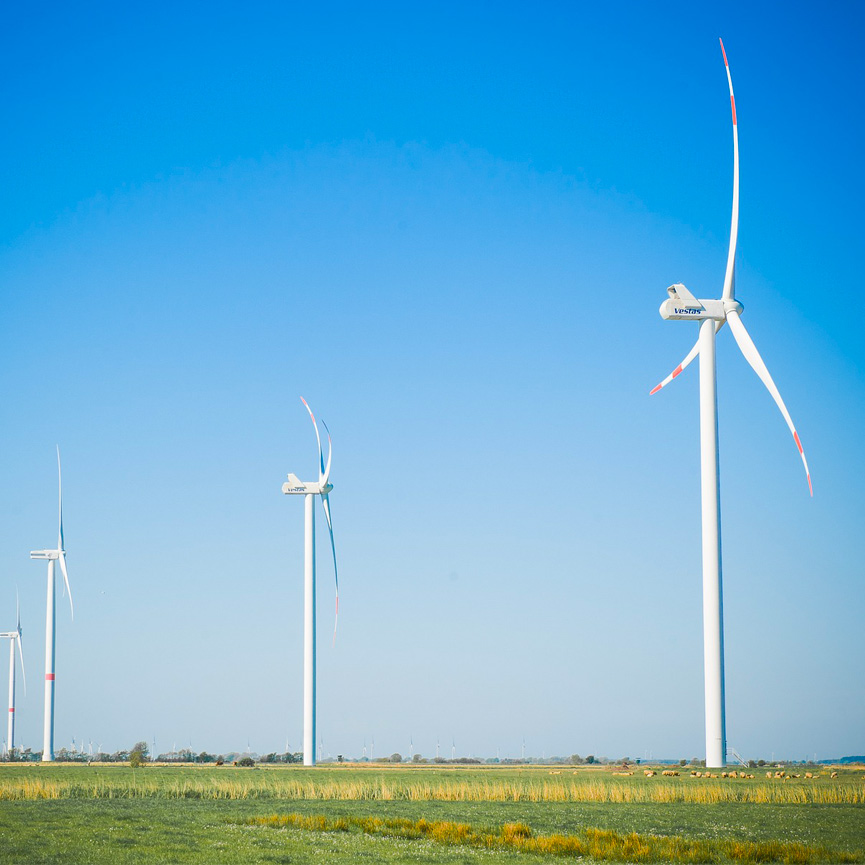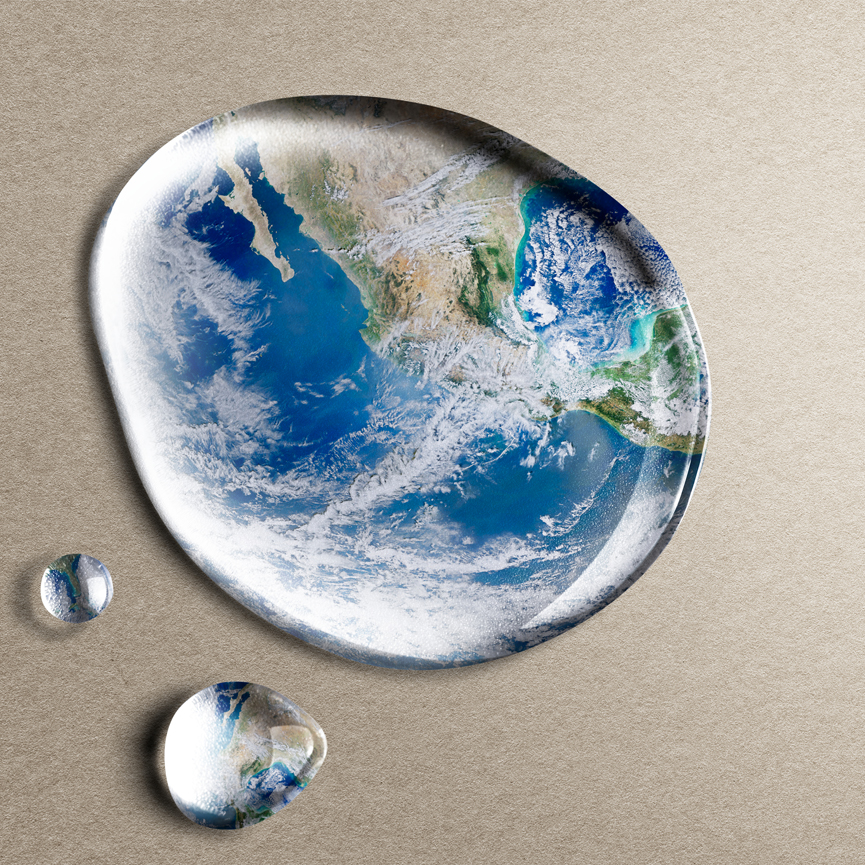A Climate-Smart Agriculture for a Better Tomorrow
Posted on October 11th, 2023

Climate change is one of the most daunting issues that our world is facing right now. Over the last few years, we have had extreme weather events like floods, droughts, storms, and wildfires amongst others. All of these pose a grave threat to our existential ecosystems like agriculture, food, and water supplies.
In its latest ‘State of Climate’ report, the World Meteorological Organisation (WMO) notes that four key climate change markers – greenhouse gas (GHG) concentrations, rise in sea levels, ocean heat, and ocean acidification – have hit record highs in the last year alone!
The tangible impact of climate change is so severe that leading climate scientists believe that the unprecedented heatwave in India was made 30 times more severe due to a man-made climate crisis.
How agriculture is a leading contributor to climate change
In an agrarian society like India, agriculture and its allied sectors are one of the largest livelihood providers. However, they are also one of the largest GHG emitters. India is the third-largest emitter of GHGs with agriculture alone accounting for about 19% of these emissions.
For a majority of people in India’s rural areas, agriculture is the primary source of income and despite its record food production year after year, India needs to substantially increase its agri output to feed its ballooning population. This ever-increasing demand for food puts added pressure on farmers to produce more with each passing day. To achieve this, farmers engage in intensive farming that demands excessive use of fertilizers and pesticides, frequent shifts towards livestock and cash crops, and land-use changes that accelerate GHG emissions like carbon dioxide, methane, and nitrous oxide.
- Extensive use of fertilizers: Did you know that India is the second-largest user of fertilizers in the world? Urea – a major component of fertilizers, accounts for 82% of nitrogen consumption and di-ammonium phosphate accounts for 63% of the total phosphate consumption. Over the past two decades, India’s per hectare fertiliser usage has grown by a whopping 70% with every quintal of nitrogen applied in farming emitting 1.25 kg of nitrous oxide, the third-most influential GHG.
- Cash crops and livestock: Crop and livestock production contributes around 42% and 58% to total agricultural emissions in India. Rice, wheat, cotton, and sugarcane – the four predominant export-oriented cash crops together constitute around 80% of the total crop emissions. Livestock such as cattle, buffalo, sheep, and goats add 99% of total livestock-related GHG emissions.
Additionally, common agricultural practices like stubble burning and flooding of paddy fields further amplify GHG emissions.
As the saying goes, what goes around, comes around. While the agriculture sector is responsible for climate change due to GHG emissions, it is also one of the most severely impacted sectors by the disastrous effects of a changing climate.
So, what can we do to tackle this global issue? One simple change that can mitigate the impact of climate change is the adoption of “Climate-Smart Agriculture”. Let’s explore how climate-smart agriculture can help mitigate the adverse effects of climate change.
Demystifying climate-smart agriculture
While agriculture is significantly responsible for climate change, it can also be a solution. Using the right techniques and technologies, agricultural land alone can store up to 1.2 billion tons of carbon and could offset 4% of the average annual GHG emissions over the rest of the century. This is where climate-smart agriculture comes in.
The Food and Agriculture Organization (FAO) defines “Climate-Smart Agriculture” as an approach to leverage agricultural ecosystems to mitigate the effects of climate change by achieving the below “Triple Wins”:
- Sustainably increasing productivity and incomes
- Adapting to climate change, and
- Reducing GHG emissions
WayCool: Leading from the front
WayCool, India’s largest Agritech and Agricommerce company, has shown the way to effectively tackle climate change through climate-smart agricultural practices.
Through its Outgrow agriculture extension program, WayCool has been helping thousands of smallholder farmers in India improve their soil health, enhance biodiversity, and integrate livestock-based natural inputs to improve farm productivity, reduce cultivation costs, and generate sustainable income throughout the year.
1.Enhancing Soil Health:
Soil Organic Matter (SOM) defines the fertility and crop productivity of the soil. It acts as a reservoir of nutrients for crops and increases the soil’s water holding capacity. Through sustained regenerative farming techniques like cover cropping, green mulching, minimum/no-tillage, and livestock-based green manure, WayCool’s OARS model farm near Bengaluru recorded an improvement in SOM from 0.8% to 1.58% in 2021-22, which resulted in an improvement in the soil’s organic carbon from 0.5% to 0.8%.
What this essentially means is that within the next two cropping seasons, the OARS model farm will only require micro-nutrients as per the soil composition, and the entire macro-nutrients requirement will be completely fulfilled by the SOM.
Furthermore, due to a significant improvement in SOM and SOC, the cultivation cost of crops like tomatoes and pumpkins at the OARS model farm has been reduced by 10% to 30% which has helped increase farmers’ incomes by 15% t0 30%.
2.Optimising Water Utilisation
As part of Outgrow’s farmer advisory services, WayCool actively promotes and educates farmers on the importance of water conservation.
Demonstrating water optimisation measures like drip and pitcher irrigation, farm ponds, rainwater harvesting, and groundwater recharge, WayCool has recharged approximately 7 lakh litres of water into the ground last year and has ensured water availability for the OARS model farm as well as all nearby farms throughout the year, across the past two years.
At the COP26 summit in Glasgow last year, India pledged to achieve net-zero carbon emissions by 2070, and WayCool is committed to actively contributing to this ambitious goal.
At WayCool, we strongly believe that ESG is something that you do every day. Whether it is adopting regenerative agricultural practices to improve the per acre farm yield, solarising our facilities to generate clean energy, installing advanced water treatment plants for optimising water usage, and infusing automation at every stage of the agri value chain, we are doing everything we can to contribute to a healthier planet.
Cross-docking Automation Paves Way for a Concise Supply Chain
Posted on October 11th, 2023

The increasing popularity of Just-In-Time (JIT) methods and high-quality information flow has applied increased pressure on supply chain management performance. Better throughput, more product lines and value-added services are now expected to alleviate the uncertainty in demand. Subsequently, the objective is to synchronise the manufacturer and the customer for a flow-through operation that minimises the costs and risks of warehousing.
WayCool, India’s largest agri-commerce company, is transforming the country’s food economy through this very same supply chain proposition. We identified and implemented Cross Docking automation to eliminate storage and corresponding handling costs in less-than-truckload and full truckload shipments.
This has helped us significantly reduce the dispatch time while accentuating the transfer efficiency between the terminals.
The business challenge
Our Chromepet Distribution Centre (DC) required manual unloading and customer or dispatch-wise segregation of all materials on the dock. A stringent manual inspection followed this, adding to the operation time and sub-optimal inbound and outbound documentation assignment. With an expansive range of crates, bags, and carton boxes, load consolidation was getting increasingly cumbersome considering the rising number of daily shipments. The excessive need for manual inspection at every touchpoint meant a long supply chain for us, thus calling for the need to find alternative methodologies.
The solution
In line with the Cross Docking automation objectives, we applied a standard distribution practice via conveyor belts that segregate the crates zone-wise within the route itself. The crates are then automatically placed in the outbound delivery vehicles by customer-wise dispatch sorting.
Project highlights
- Installation of a weighing scale that accurately verifies the crate, bag, and box integrity at the inward and outward terminals
- Mechanisation to ensure complete elimination of manual checking
- Installation of barcode readers that automatically scan each package to add the element of traceability along the complete chain
- Display guide towards dispatch maintains the flow of information within the DC and ensures that crates are stacked in trucks in the sequence of delivery.
Results
- End-to-end traceability: Customers’ crate details with the appropriate weight are auto-populated in the system, thus reducing the information parity experienced earlier.
- Elimination of DC-level manual checks and reduced labour: The makespan and distance travelled between the receiving and shipping doors are reduced as a key performance indicator by taking out the labour-intensive element in the process.
- Efficient last mile distribution: The technology used in Cross Docking ensures that delivery crates are stacked in line with the delivery plan, thus ensuring that the dwell time at each delivery point is considerably reduced.
Building successful business models through sustainable practices
Posted on October 11th, 2023

When it comes to developing sustainable food systems, India is at the forefront even as other countries argue over who should bear the weight of climate change. We are on the verge of a seismic transformation fueled by technology, quite similar to the ‘Green Revolution’ that helped India recover from an agricultural catastrophe in the 1960s. It is vital to understand the real work that is being done to protect the environment while still generating profit because no business activity is viable until it becomes profitable.
WayCool, while addressing the significant difficulties faced across the food sector, is leading the way with its full tech stack. Our climate-smart ‘Soil to Sale’ value chain is extended throughout food sourcing, processing, and distribution, moving over 900 tonnes of agricultural produce every day from a network of 85,000+ farmers.
Green Initiatives = Optimum Resources = Reduced Business Overheads
As our work at WayCool demonstrates, climate-smart strategies can also be business smart. Our distribution centres (DCs) are solar-powered, and we employ low-energy lighting and fans throughout our buildings. The switch to solar power has enabled us to cover 75% of our daytime energy demands with green electricity, increasing our overall renewable share from 0% to 5% in the previous year. The energy-saving lights and sensors installed across our facilities may appear to be minor upgrades, but it has saved over 8,000 kWh of electricity till date—that is equivalent to more than six tonnes of greenhouse gas emissions! This is just one of many energy-saving projects. In the previous fiscal year, our entire solar endeavours helped avert nearly 79.6 tonnes of carbon dioxide.
WayCool’s innovative water treatment systems allow for recycling for two to three days, and quick treatment and reuse of wastewater created. Over 6.2 million gallons of wastewater has been processed till date, and redirected for home uses, gardening and groundwater recharge, resulting in savings of at least Rs 40,000 per centre.
Building for a better tomorrow
Our carbon sink project, Miyawaki Urban Forest, has been implemented at a time when there is a shortage of carbon offset programs. Influenced by the 1997 Kyoto Protocol, the Miyawaki Urban Forest has grown from a tiny space with a single seedling to a 14,660 sq ft big undertaking, absorbing huge amounts of carbon from the atmosphere. It was expected to sequester 0.86 tonnes of carbon dioxide emissions in its first year of operation and up to 180 tonnes upon full development for the next 10 years.
Feeding India the right way
WayCool engages with thousands of farmers, through its farmer engagement program ‘Outgrow’, to promote regenerative agriculture practices such as natural input adoption, mulching, crop diversification, livestock integration, cover cropping, and minimum/no-tillage. These improved practices have been implemented at Waycool’s model farm Outgrow Agricultural Research Station (OARS) for over 2 years, completing 25+ harvest seasons. The results achieved at the model farm demonstrate a significant reduction in the farmer’s cost of cultivation (between 5% and 30%) and improvement in soil health (increase in soil organic carbon – SOC value from 0.5% to 0.88%), which in turn protects the local ecosystem and enhances the yield and quality of produce while sequestering carbon emissions.
Agriculture consumes 70% of all water withdrawals worldwide, with around 60% lost owing to improper application. Through our GMX 100 micro-weather station, GIS-enabled IoT system, farmers are enabled with plot and crop-wise irrigation recommendations, AI-based pest and disease predictive analytics and rainfall prediction, hence eliminating excess irrigation and water resource loss. At the OARS model farm, WayCool also demonstrates structures for water harvesting and conservation like drip-irrigation systems, field channels, farm ponds and percolation ponds, that have the potential to harvest and recharge more than 7,00,000 litres of rainwater per year.
Bridging the gap between produce and customer
Exotic vegetables usually come at a hefty price because they are obtained from remote and hidden locales. However, WayCool has been able to find other sourcing places by applying advanced soil and weather analytics through Village Kart, a leading exotic and organic fresh fruit organisation. We saved approximately 280 kg of CO2 emissions every vehicle journey by lowering food miles travel from 360 km to just 2 km. This has had a favourable environmental impact, and the shorter travel time guarantees that buyers receive the product as soon as possible, preserving its freshness. We not only reduced food travel miles, but also transported food responsibly by including EVs in our last-mile delivery. EVs have completed over 353,293 kilometres of carbon-free travel, saving approximately 85.2 tonnes of tailpipe carbon dioxide emissions.
While the majority of the planet is talking about sustainable development, action on the ground has stalled. We at WayCool have had tremendous success in walking the talk. We think that true sustainability is only feasible if the business model generates profit, which is the foundation of any successful firm. WayCool has discovered the right combination of environmentally responsible practices and company success.
Groundwater and Its Impact on Food Systems
Posted on October 11th, 2023

Water shortage, or rather the availability of clean water, is an issue that has been nagging humanity for quite some time. Despite the struggles and disparity, an increasing number of organisations have started leveraging the power of technology to ensure minimal wastage and conserve this invaluable resource.
Water is a critical input towards agricultural production and food security. Irrigated agriculture represents about 40% of global food production. South Asia, the OECD countries, and the Middle East and North Africa (MENA) countries have the highest dependence on the depleting groundwater sources for food production.
According to a study, groundwater depletion in India will result in up to a 20% reduction in food crops nationwide by 2025. Groundwater accounts for about 60% of irrigation supplies in India, making it precarious for food security. The usual issues causing depletion are unsustainable consumption for irrigation and mismanaged consumption for industrial usage. This becomes a serious concern considering that India accounts for 10% of the global agricultural production.
How climate change is further accelerating groundwater erosion
Although invisible, the impact is visible everywhere. The ground reality is that globally 1 out of every 8 people suffers from a lack of access to safe drinking water.
The Indian sub-continent has the dubious distinction of being an overpopulated country. With this, climate change and groundwater depletion form the crux of the concerns and challenges faced by many.
Climate changes, including erratic rainfall in arid areas, have put additional stress on groundwater resources. These resources serve about 85% of the domestic water supply in rural areas, 45% in urban areas, and represent 60% of irrigated agriculture. Moreover, overexploitation of this invaluable resource adds insult to injury by posing threats to livelihoods, food security, and climate-driven migration.
An example of this is the Doula village, located 55 kms northeast of New Delhi. Until the 1980s, the harvests of rice, millet and mung beans were irrigated with clean water directly from the river or with groundwater extracted from shallow wells. The industrial development near the Hindon River has polluted the waterways and even contaminated the freshwater aquifers. Today, Doula village suffers from severe hydrological mismanagement.
Doula village is no exception. Other regions, too, stand unsafe to water pollution and industrial development, among other issues.
Why arresting groundwater erosion is critical
India is on the brink of a widening emergency. The country consumes over 600 billion cubic metres of water annually, of which 245 billion cubic metres come from aquifers. So, just over 40%! India is far more dependent on water pumped from aquifers than any other nation. Over 90% of the groundwater in India is used for agriculture irrigation. The remaining 10% makes for about 85% of the country’s drinking water.
The grave issue is that about 80% of the 1.35 billion residents rely on groundwater for drinking and irrigation. What’s more, India houses 16% of the global population and holds only 4% of the global freshwater resources.
This is further amplified by spoilt aquifers and water scarcity. Water reserves are getting smaller and dirtier.
Yet another issue is the one highlighted by NITI Aayog – the annual per capita water availability will reduce to 1,140 cubic metres by 2050. A concomitant result will be a fall in cropping and imbalances in food security.
The Jal Shakti Ministry gauged that about 17% of groundwater blocks are overexploited. Another issue is that, between 2004 and 2017, the percentage of safe blocks decreased while those of semi-critical, critical and over-exploited ones steadily increased. According to the data from 15,165 locations in 32 states tested by the Central Ground Water Board (CGWB), groundwater had higher levels of contaminants than permissible limits of Arsenic (697 locations), Fluoride (637), Nitrate (2,015), Iron (1,389), and Salinity (587).
Initiatives taken by WayCool to save groundwater
- Efficient Water Management
Traditionally, sewage trucks were called upon to dispose off the wastewater, thereby incurring recurring costs on sewage handling. But WayCool has installed a competitively-priced water treatment system. With this, every bit of wastewater generated gets treated promptly. In addition, the water used for washing the crates at one of the warehouses is passed through a multilayer filtration system enabling recycling for up to 2-3 days. These practices fulfil the SDG 6 of clean water and sanitation.
All the wastewater gets fed into the treatment unit to make water suitable for reuse. From here, it gets redirected to the domestic use, gardening or harvesting system.
The cost-savings? For one warehouse alone, this translates to over INR 40,000. This is money saved on sewage trucks and reduced freshwater withdrawal.
- Technology-based Irrigation Management
WayCool has installed an indigenously developed micro-weather station at its Outgrow Agricultural Research Station (OARS) model farm near Bengaluru. This micro-weather station accurately analyses the prevalent local climatic conditions, including rainfall, temperature, humidity, and soil moisture. Furthermore, WayCool has acquired GramWorkX to bring predictability to farming. GramWorkX’s smart farm resource management solution analyses the real-time micro-climatic conditions and accurately predicts the weather conditions in the days to come. These actionable insights in turn help farmers monitor and optimise water usage as compared to conventional methods.
- Smart Drip Irrigation
WayCool has covered 100% of the cultivated farm area at OARS through drip and pitcher irrigation systems. In fact, the WayCool agronomist team reaches out to the Outgrow farmers base to largely adopt these efficient irrigation practices. This brings down the cost of cultivation for the farmers substantially that is incurred on water pumpsets operating electricity cost, weeding and inter-culture.
Tangible impact
The overall benefits are better regulation and monitoring, cost-savings and accurate and predictive insights.
The endeavour of the water treatment system at the WayCool facilities has resulted in 2.2 million litres of wastewater being treated till date, of which approximately 75% is taken to groundwater recharge. The IoT smart metering devices installed at warehouse operations, have not only helped in the real-time monitoring of the water use patterns but has also enabled data-backed decision making.
Furthermore, on the farming side, harvesting rainwater has given effective water control and replenishing of the groundwater table. The initiative via farm pond structure at WayCool model farm captures 100% of rainwater. In the last year alone, about 700,000 litres of rainwater was collected. On the other hand, about 90% of the Outgrow farmer base have implemented the drip irrigation system, which has delivered 30-40% less water usage for irrigation purposes. Finally, by leveraging technology to render efficient irrigation, the GramWorkX micro weather station implemented at our OARS farm has reduced water usage by over 40%.
Going forward, WayCool aims to be a water positive organisation through efficient operation practices, water treatment infrastructure and the creation of additional water catchments.
Watch the video here:
